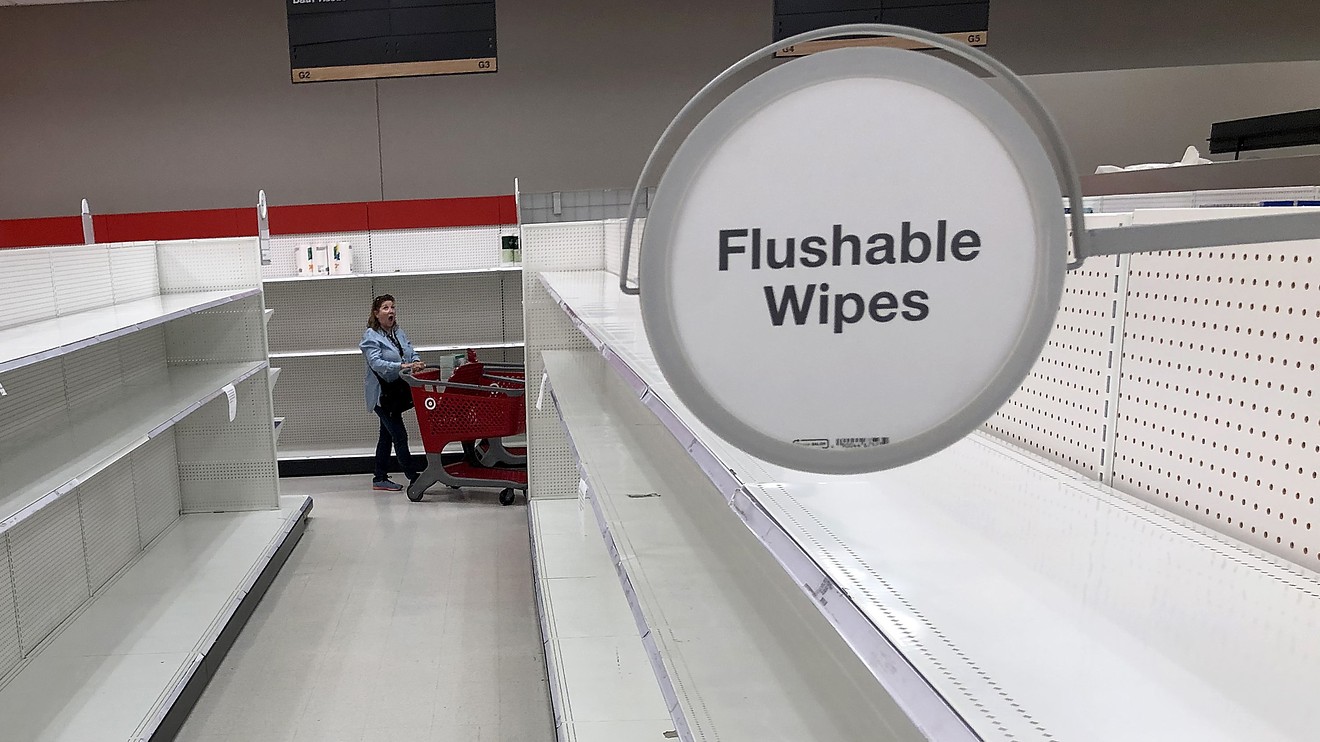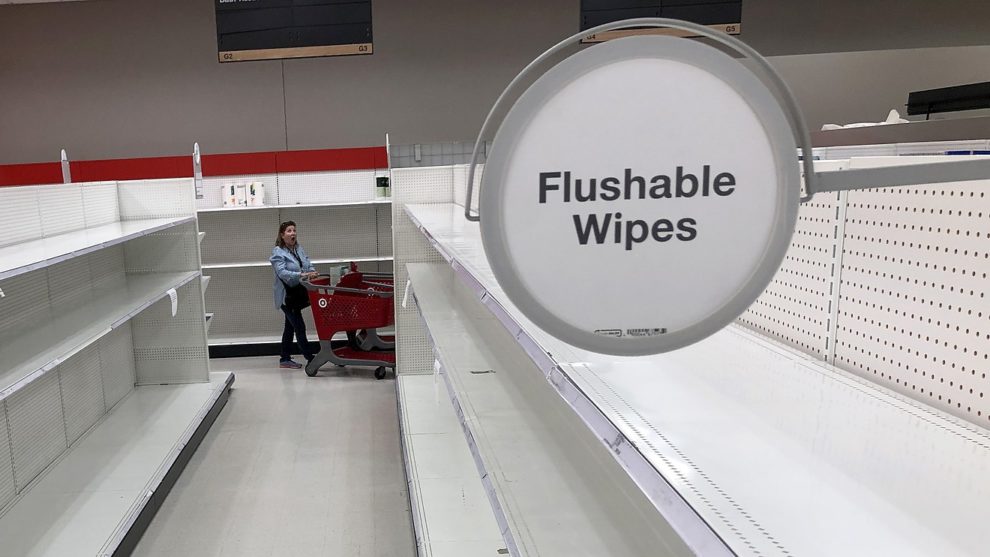
Overheard in the self-quarantine home office: my husband’s virtual coworker has a solution for no toilet paper.
Dryer sheets. He was kidding — we think.
Conan O’Brien suggests using those notorious arm-length CVS receipts and for sure, bidets have never seemed smarter as preventing the spread of COVID-19 saps even the most personal resources.
People lucky enough to have a gold mine of two-ply may not realize that the extra demand on the most important room in the house and hoarding for the sake of hoarding have led to ransacked paper-goods aisles in grocery stores, drugstores and big box chains. Creative hygiene is now an offshoot from the social distancing and work-from-home contingencies deemed necessary to slow the deadly new coronavirus pandemic. But there’s a cost to this behavior: stress on home plumbing and public sewer systems.
Read: Tennessee man sitting on almost 18,000 bottles of hand sanitizer says he’s doing ‘a public service’
Even what passes as the next best thing to standard toilet paper, such as wet wipes — sometimes labeled flushable, and increasingly snapped up from depleted baby departments — as well as Kleenex, are getting picked over too. Their increased use isn’t kind to the pipes either, say experts.
Gus Kazek, an environmental engineer with wastewater consultancy Brown and Caldwell, who advises mostly Ohio municipalities, says the disposable wipe industry is misleading consumers because the wipes cannot biodegrade fast enough in water. The wipes get caught in sewer systems’ mesh screens meant to stop debris from making its way into treatment facilities and that means water can’t easily get through either. Sometimes costly teams of scuba divers have to clear the blockage, an expense typically passed on through higher fees to residents.
Here’s what the experts advise as best practices to stay clean, healthy and smart about bathroom hygiene in these trying times.
Don’t squeeze out other shoppers. Households are panic buying toilet paper even though experts say it isn’t necessary: the supply chain is working, they insist.
“When consumers hoard products and create larger-than-needed inventories at home, they tend to consume their way through those inventories at the usual rate. Thus, consumers don’t need to resupply themselves for a longer period of time, and this allows inventory to rebuild back to normal levels at retail stores over the course of a few days or weeks,” said Alan Erera, professor of supply chain engineering, operations research and transportation logistics at Georgia Tech. “So when panic buying occurs, try to avoid the temptation to join the frenzy.”
Don’t shame, either. Families are unsure how long their homes will be 24-7 stand-ins for business centers, schools, bars and restaurants. Restocked shelves also seem to be emptied as soon as they’re replenished.
“Considerable attention is on what individual households and organizations are doing wrong: buying the wrong things, following the wrong advice, spreading the wrong information. What we should rather focus on is the tremendous failure of our systems to address an unfolding crisis,” writes Tricia Wachtendorf, a professor of sociology at the University of Delaware and director of its Disaster Research Center, in an opinion piece for MarketWatch.
Expand your options. Toilet paper is still being made; the trick is finding it. Virtual shelves are picking up some of the slack from brick-and-mortar stores.
Data technology firm Bloomreach gathered online sales data for common stockpile items from the week of March 8-14 from some 250 of its retailer customers and found that sales for toilet paper and paper towels increased 279% from the week prior. For anyone hesitant to leave their home at all, an Amazon.com AMZN, -0.75% 24-roll mega-sized family pack of Cottonelle sells for $25.18 and qualifies for free delivery for Prime members.
The safest alternatives. Household pipes are only four inches in diameter at their widest. That means even cotton rounds, paper towels and too much toilet paper can bunch up and be problematic, says water and wastewater services company American Water Works Co. AWK, -6.94%.
“Whether the package says ‘non-flushable,’ ‘flushable’ or ‘septic safe,’ it doesn’t matter,” the company says in a blog post. “Do not flush. Wipes do not biodegrade quickly, are prone to getting stuck in drains and can potentially lead to a massive and expensive clog.” The average cost of having your sewer main unclogged is $550.
If you’re really in a bind during the pandemic and don’t quite have time to install a bidet, or Japan’s popular handheld water wand, an off-the-grid enthusiast suggests these toilet paper alternatives: the remaining cardboard roll; a washable cloth or sponge (no offense to ancient Romans, but single-use-only these days); newspaper; and sanitary napkins. None of these are flushable.
There are many practices inside and outside the U.S. that might be particularly helpful right now. Water-filled vessels — commonly known as lotas in Urdu or Hindi — are pushed into service beside the commode for many Indians, Pakistanis and Bangladeshis, this column in the Chicago Sun-Times says. Filipinos, at least according to social-media posts, refer to a similar device as the tabo, Indonesians call it the gayung and Iranians have aftabehs.
Habit-changing for the long run? Green-minded consumer experts say this extreme circumstance for bathroom behavior is as good a time as any to examine the role of convenient paper products in a smarter future.
Even advocates, such as the Natural Resources Defense Council, recognize the ease and hygienic qualities that toilet paper brings to the modern household. Rather, they’re pushing major manufacturers including Procter & Gamble PG, -3.64% , Kimberly-Clark KMB, -2.02% and Georgia-Pacific, for greater recycled materials use in toilet paper as each American uses nearly three rolls per week, on average.
According to a calculator from the Environmental Paper Network, tissue products made from 100% recycled content have one-third the carbon footprint of those made from 100% virgin forest fiber.
div > iframe { width: 100% !important; min-width: 300px; max-width: 800px; } ]]>











Add Comment